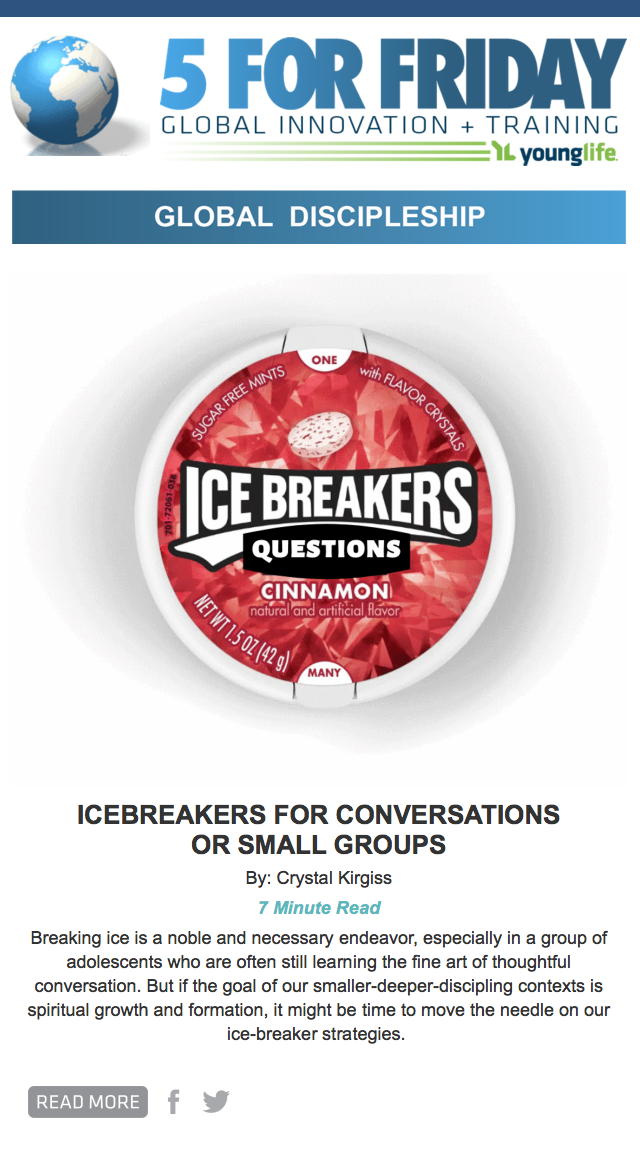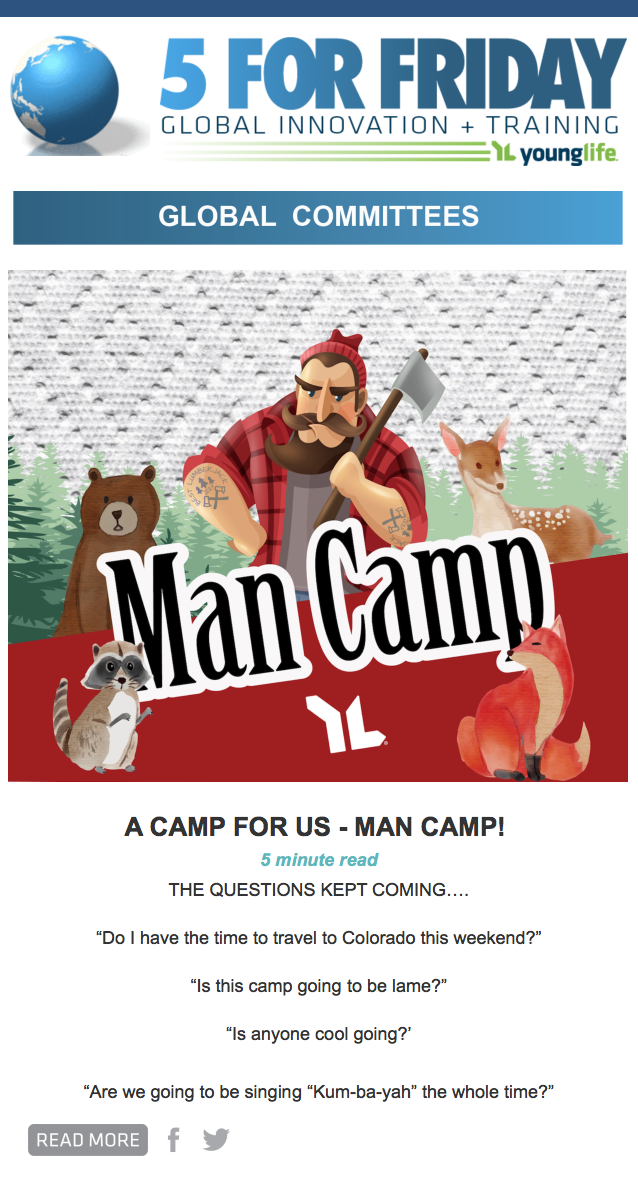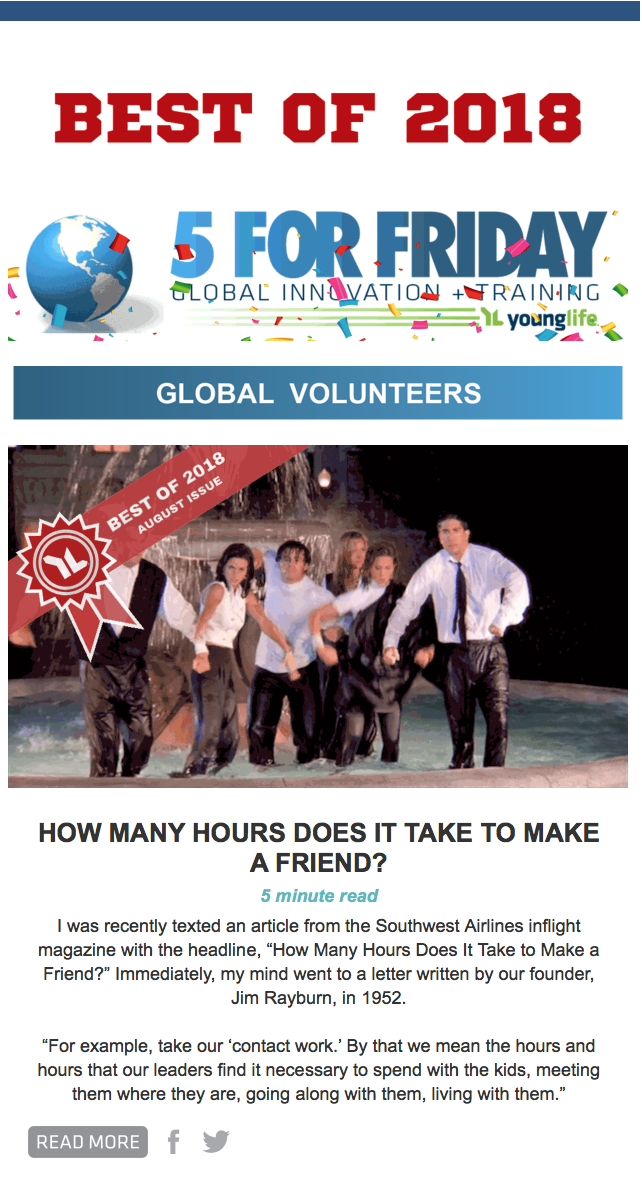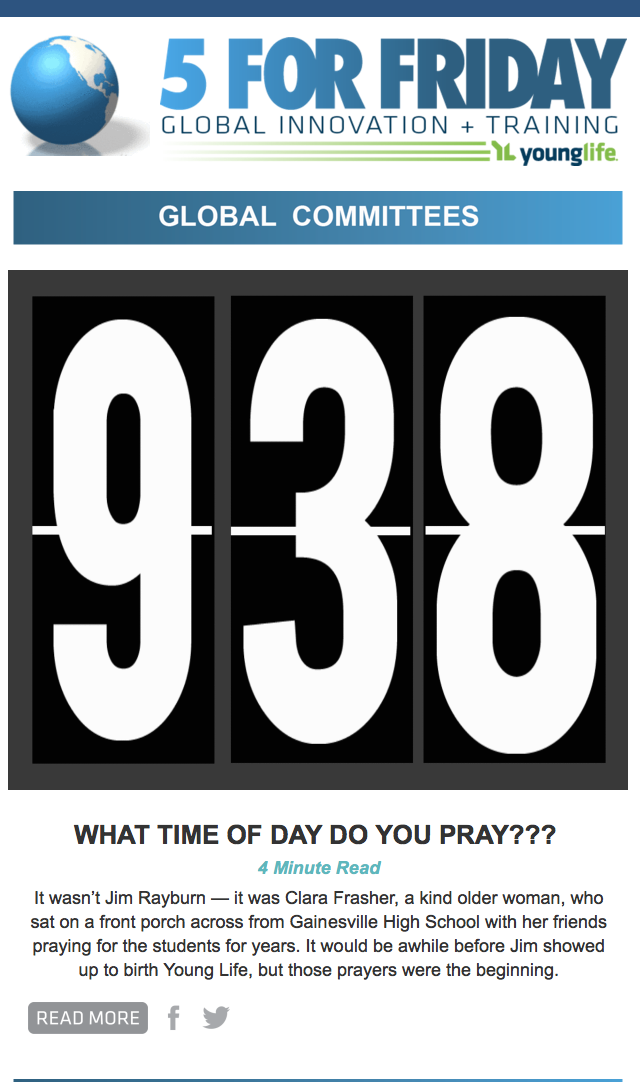This is how I remember it …
YOUNG LIFE INTEREST MEETING, SEPTEMBER 1999
The Time: 7–9 p.m.
The Town: Mackay, Idaho
The Location: According to my handwritten directions — the house 5 miles down a county road on the left-hand side just passed the split rail fence.
The Purpose: Interest meeting to start Young Life.
The Agenda: Starting club at Mackay Junior/Senior High School — enrollment: 92.
Prayer
Coffee, pie and brownies
Introduction and sharing
Discussion about kids at the local school (Mackay High — Home of the fighting Mushers!)
What is Young Life?
The Attendees:
12 adults (1 local pastor, 2 ranchers, 3 teachers, 5 parents and 1 forest ranger)
3 dogs were left in trucks parked outside.
For much of my more than 40-year career with Young Life, this has been my life. It involves driving a few nights each week from small town to small town all over the Western United States with names you have never heard of and on county roads you have never been on. It involves traveling with the hope of getting to talk with people about bringing Young Life to their community.
One of many pivotal moments was at a Young Life interest meeting sitting in Hilda Goddard’s living room one fall evening. “We need to tell our neighbors in Challis, Idaho, about this Young Life thing!” was the reaction of Harold, (one man in attendance) at the end of the night. I soon discovered that the “neighbors” in Challis lived at least 60 miles away! My understanding of the word “neighbor” began to grow that night. The gap of distance was overcome by the closeness of circumstance. Even internationally, I have been struck by the countless villages, townships and small towns dotted all around the globe that share common traits and challenges. My constant prayer is that there are people in these places who will reach out to these kids to love them, walk with them and tell them about the hope that comes with a faith in Christ.
Harold, whether he knew it or not, shared the heart and vision of Jesus. He understood how God works through the ministry of Young Life to not only transform individual lives of students who attended Mackay Junior/Senior High School, but to a greater extent, the entire community. The book of Matthew tells us that “Jesus made a circuit of all the towns and villages. He taught in their meeting places, reported kingdom news, and healed their diseased bodies, healed their bruised and hurt lives” (Matthew 9:35, MSG). Jesus wanted His message to get to everyone, so He went places most people would pass by. He had a heart and vision for the next small town!
We pass by our small towns and villages every day, giving them very little thought, but there are so many!
Here are a few interesting observations that I have learned in the past year.
In the United States there are 18,025 small towns.
There are over 32,000 schools in small towns; 18,000 are secondary schools.
21 percent of the U.S. population lives in small towns.
94 percent of the total square miles of the U.S. (3.4 million square miles) are considered rural.
At-risk behavior statistics in rural communities are identical to urban centers.
Here are some facts that you won’t find on any U.S. government website.
Many small town high schools adjust schedules around the harvest or hunting seasons.
The nearest Walmart may be over an hour away.
The local high school may have special parking for students’ tractors or horses.
It is a community event when a new fast-food restaurant opens!
Young Life leaders have been known to reschedule summer camp dates to not interfere with the County Fair.
… And there is a pretty good chance that you have a small town “neighbor” right down the street within 60 miles or less. So what do you do? Four steps to think about the NEXT school!
Never Forget to Pray — Get a map and draw a circle with your town in the center of a 60-mile radius. Pray for towns in this circle; pray for the towns that jump out at you; pray as you drive through them; pray for the Lord of the Harvest to raise up workers. Do a prayer walk through the town. TRY THIS: Set an alarm on your watch to remind you to pray at 9:38 (Matthew 9:38). Pray each day for one or two of the towns in the circle of your “neighborhood.”
— Ask your committee, leaders, friends, who knows somebody in these towns? TRY THIS: Contact Young Life Alumni & Friends to help you find people in town who may have a Young Life background. Make some calls to pastors, civic leaders, and business people.
eXtend a Hand — Get a leader, a committee member, club kid, friend and make a road trip! TRY THIS: Go to the town; spend time in the community. 1. Pray at the school. 2. Eat at a local restaurant. 3. Meet with a local pastor.
Take the Next Step — Mobilize someone in the town to host a meeting of people who care about the kids in their community and need to know more about Young Life. You can check out the Small Towns Tool Box to give you ideas for this meeting.
There are Small Towns everywhere we go. Slow down, take some time to notice them and then do the NEXT steps. Email me if you would like to receive the Small Towns Newsletter or would like to attend the Small Towns Summit in December. To learn more or if you have any questions, check out the resources below for help.
Resources to Help: Small Towns — The Atlantic Magazine
Small Towns Director — J.C. Bowman — jcb31954@gmail.com, 208-866-0540
Jump Starts — Don Stuber — dstuber@sc.younglife.org, 360-789-6676
Ken Purnell — kendpurnell@gmail.com, 541-620-0270
Written By J.C. Bowman

























































